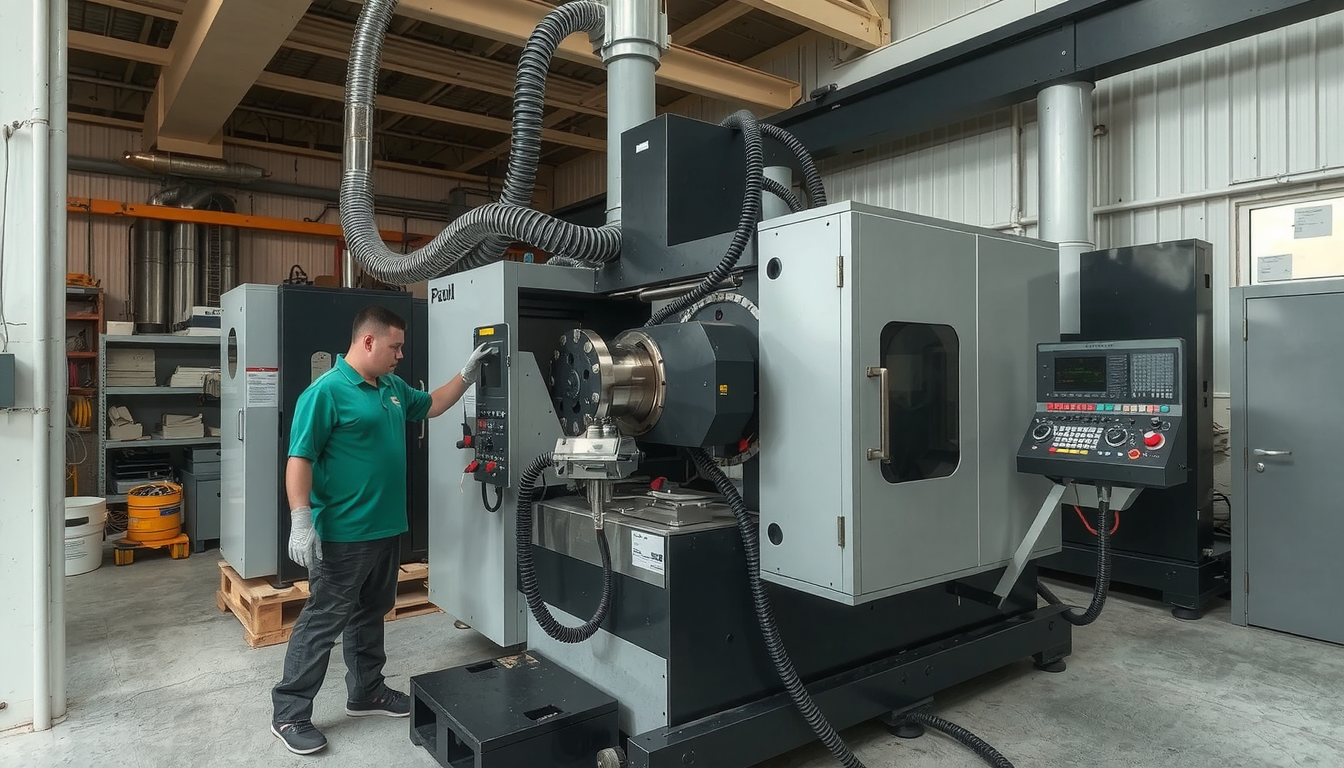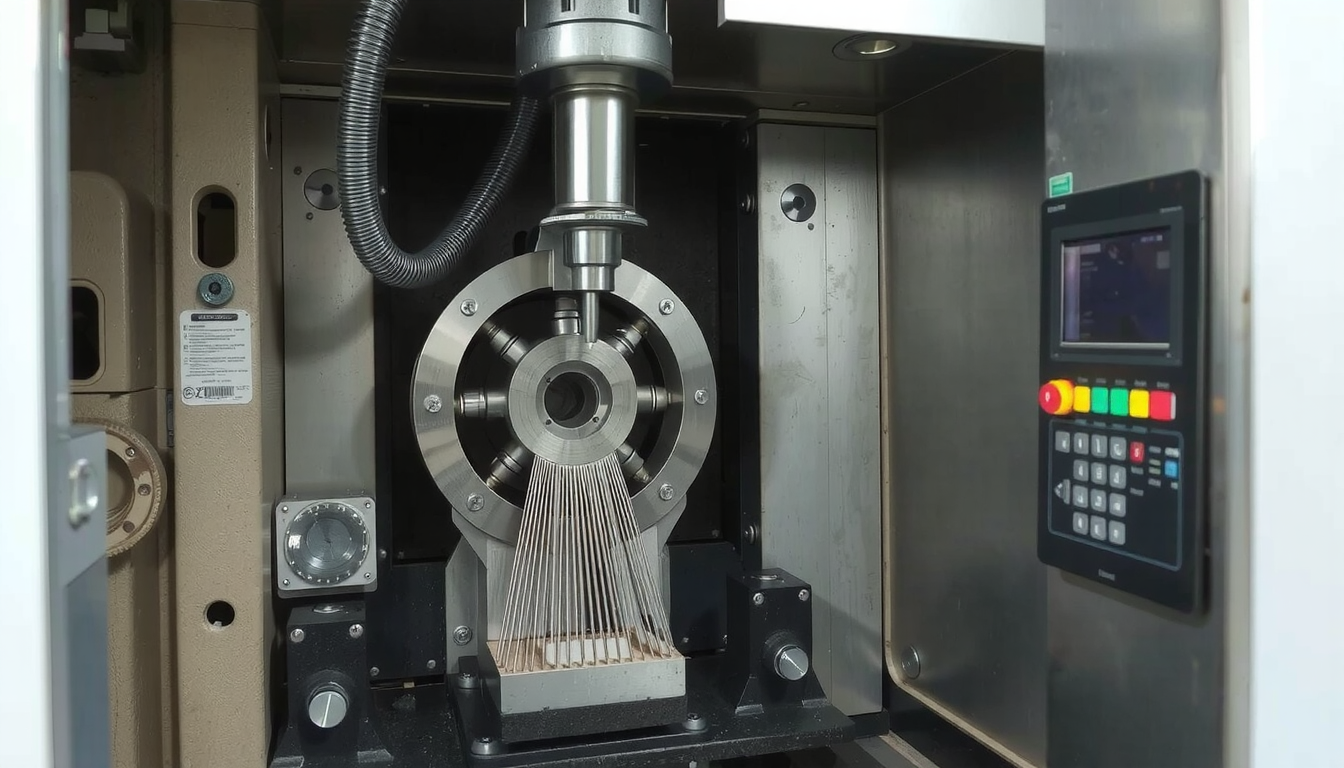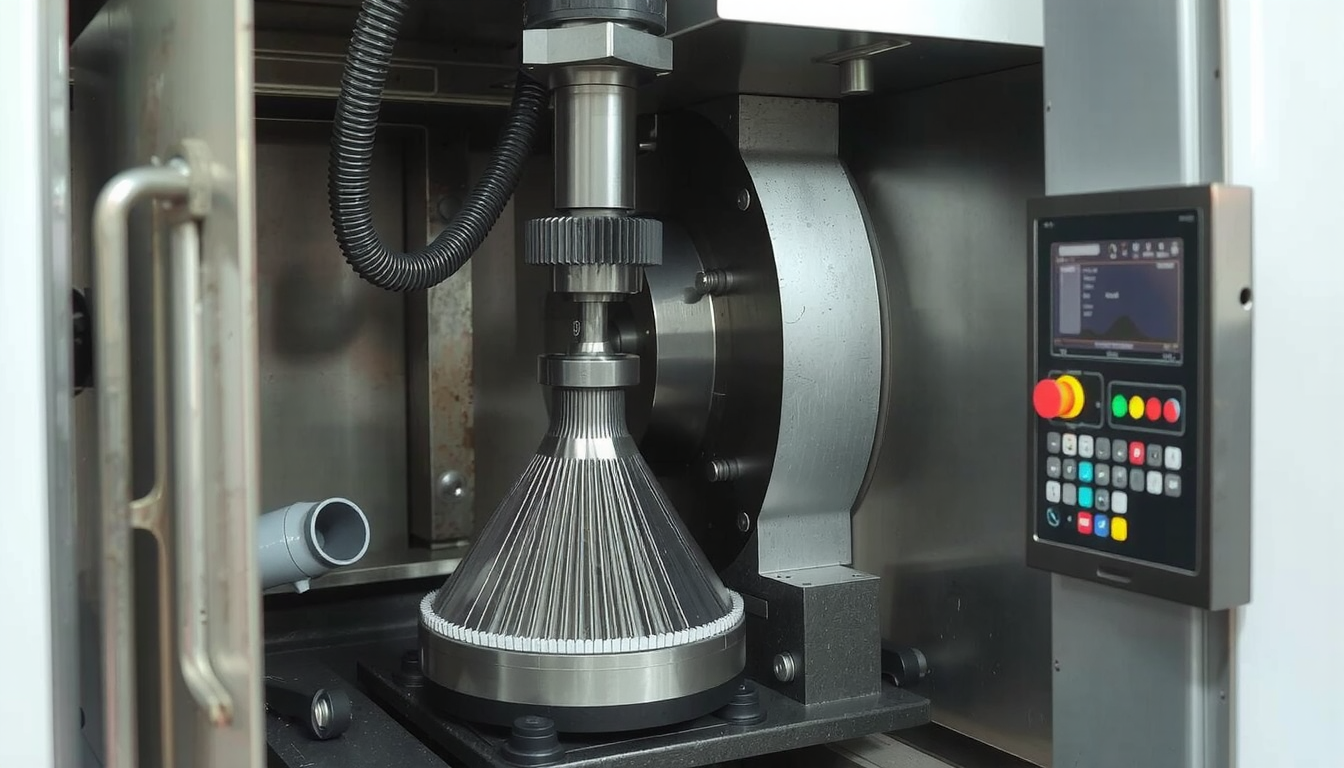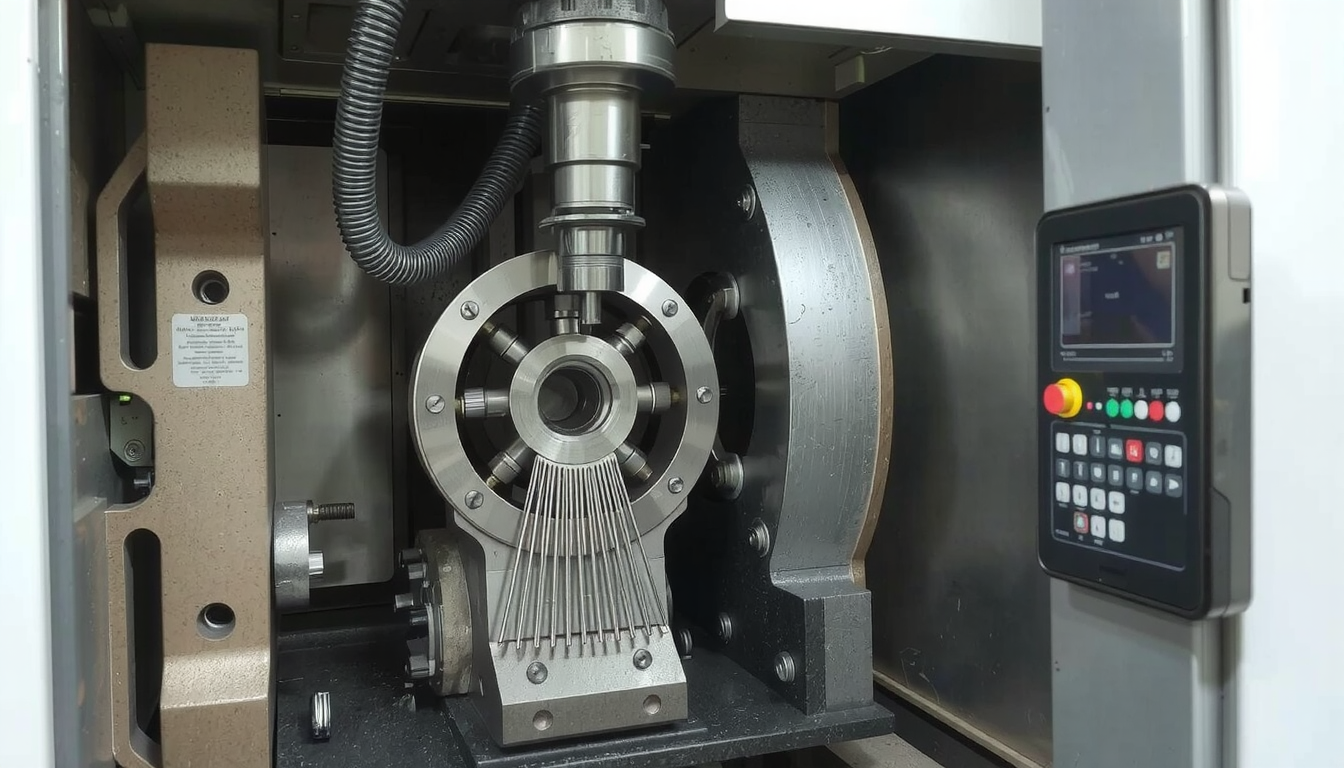Fabricating intricate parts has its challenges. A number of designs require the use of both rounded and flat surfaces. Previously, this meant using two machines: a mill and a lathe. This was a time-consuming process and could lead to mistakes.

Nowadays, we have a more convenient option. CNC mill-turn machining services integrate both processes onto one machine. This format not only allows the manufacturing of parts in a quicker and more precise way but also speeds up the process of making them.
CNC mill-turn machining services offer great precision and time savings! For example, one machine does all the work. This guide will teach you about this technology, its characteristics, and how to choose a service provider for custom CNC machining for prototyping or production.
The Core Technologies: Milling, Turning, and Mill-Turn
To comprehend the mill-turn technology, you must be aware of the milling and the turning technologies first. They are the two most common methods of part creation. They involve removing material from a workpiece.
Qu'est-ce que le fraisage CNC ?
Think of CNC milling like sculpting a stone. The stone blocks remain motionless while a cutting tool revolves around it. They push, pull, or spin it thanks to the programmable command of the computer.
The rotating cutter made of a cutting tool removes the material from a part that does not move. The machines have 3, 4, and 5 axis that can move. The more axes there are the more complicated shapes can be made. However, milling is mainly utilized for flat surfaces and curves.
Qu'est-ce que le tournage CNC ?
Visualize it like a ceramicist molding clay on a wheel. The clay propels while the tool molds it. That’s the idea behind CNC turning.
A lath machine is used here to turn the rod while it is being machined. This kind of operation is very convenient for round parts like shafts, pins, and rings.
The Synergy: How Mill-Turn Centers Combine Both
Mill-turn centers are multi-functional and can do both milling and turning. One of the techniques is to spin the part along the lathe to create round features. The other way is to use the spinning tool as a mill to manufacture flat surfaces and holes.
The most significant benefit of this system is that it is “one setup.” This means that the part is finished totally in one machine without moving to another one. This slashes setup time and error rates. You will obtain a faster, more accurate part, which is the essence of modern cnc mill/turn machining.
Milling vs. Turning vs. Mill-Turn: Which Is Right?

Choosing the right method is the primary step toward achieving a good result. Every technology has its advantages. The choice of a particular CNC service that fits the best will depend on the shape of your part.
Here is a simplified chart to aid you in the evaluation of the processes.
| Processus | Primary Action | Best For (Part Geometry) | Example Parts | Key Advantage |
|---|---|---|---|---|
| Fraisage CNC | Tool rotates, part stays still | Prismatic parts with flat surfaces, pockets, holes | Engine blocks, molds, equipment housings | Non-round parts versatility |
| Tournage CNC | Tool is still, part is spinning | Cylindrical or conical parts | Shafts, nozzles, pins, fasteners | High speed and efficiency for round parts |
| CNC Mill-Turn | Both actions in one setup | Complex parts with both round and prismatic features | Medical implants, aerospace turbine blades, complex valves | Single operation with superior accuracy |
A Guide to Selecting a Machining Partner
Your choice of a CNC machining partner is as important as your design. The right supplier will ensure quality and reliability. We have been discussing the evaluation of potential partners for cnc mill/turn machining services.
Key Questions to Ask a Potential Supplier
Before you make the deal, it’s better to ask them some questions. This is how to assess their craftsmanship and track record.
- What is your experience with my specific material? Have you made parts this complex before?
- What machines do you have? Do you use true 5-axis mill-turn centers?
- What is your quality control process? Can you provide inspection reports with the parts?
- What is your standard lead time for a project like this?
Evaluating a Quote: Beyond the Bottom Line
The value of the cheapest quote does not always stand. The low cost entails some hidden quality problems or other fees. Carefully examine the specifications of each quote you receive.
A credible quote will expound on the expenses involved. It should list costs for the material, setup, and machining time. It will also specifically outline the tolerances, if any, additional finishes, and shipping terms.
Certifications and Quality Standards to Look For
Certifications reassure a company’s quality dedication. You should choose suppliers with ISO 9001 certification. ISO 9001 is the international standard for quality-inclusive management systems.
For the aerospace or defense parts, the key standard is AS9100. This standard is a stricter application of ISO 9001 in the aerospace industry. The certifications indicate the shop’s adherence to known procedures for the production of consistent quality.

The Importance of a Trusted Partnership
An effective manufacturing partner is more like a consultant than anything else. They can offer their time and help to refine your design and to find economical solutions. Finding a company that is trustworthy, like, say, Mékalite, you both get a long-lasting commitment. This way you receive consistent quality on all projects.
Design for Manufacturability (DFM) for Mill-Turn
Design for Manufacturability, or DFM, involves designing parts that can be easily produced at a low cost. The design process is a collaborative one between you and your machinist. Small changes in your design can yield better results.
Although cutting-edge CNC appliances are very capable, there are still challenges of CNC machining where complex shapes increase cost. The fundamental goal of DFM is to mitigate such concerns.
Simplify Geometry Where Possible
A less complex part is machined quicker and cheaper.
- Avoid excessively deep and slender pockets. They require special long tools which can break easily.
- Use standard drill sizes when drilling holes is possible.
- Instead of sharp corners, use rounded internal corners. As cutters are round, they create rounded corners by default.
Specify Appropriate Tolerances
Tolerances are the acceptable range of variation for a dimension. Part production can be a lot more expensive with tighter tolerances. This is because special inspection is required and more machine time is needed.
State tight tolerances only on the features that are critical for the part to operate correctly. On other features utilize standard tolerances. Most shops should be able to maintain tolerances of +/- 0.005 inches; but high-precision cnc mill/turn machining services might reach as tight as +/- 0.001 inches or even less.
Material Selection Considerations
The material selection has a major impact on cost. Some materials are really hard to machine. For instance, aluminum 6061 is easy to shape and cheap while titanium is a tough nut to crack and it takes a lot of time to produce.
You should discuss your material choice with your service provider among other things. They might suggest other materials that would save you money or meet your requirements.

Common Materials and Industries
CNC mill-turn machining services are employed to craft components from a plethora of materials. Those parts are inherent to many industries. The process has become a go-to for both metals and plastics due to its superior accuracy.
Common Machinable Materials
- Métaux : Aluminum (6061, 7075), Stainless Steel (303, 304, 316), Titanium, Brass, Copper, and various steel alloys.
- Plastiques : Delrin (Acetal), PEEK, Nylon, ABS, and Polycarbonate.
Key Industry Applications
Due to the precision and efficiency of CNC mill-turn technologies, they have found applications in a broad spectrum of industries.
- Aerospace & Defense: Advanced parts such as turbine blades, sensor casings, custom fittings.
- Médical : Surgical instruments, custom bone screws, parts for diagnostic equipment.
- Automobile : Engine components, transmission parts, custom fixtures for assembly lines.
- Électronique : Custom heatsinks, connectors, and protective housings.
The Mekalite Advantage: Precision and Expertise
Mekalite is a category builder in the combination of high-tech machinery and knowledge and is your go-to partner for all of your manufacturing needs!
Our Commitment to Quality and Precision
A partnership is the full slogan we believe in. Our team collaborates with you to ensure that every component is built to your exact specifications. The ethos for quality is interwoven through the various stages of the work, right from the primary quote to the final inspection.
Exploring Specialized Capabilities: Swiss CNC Turning Services
If you’re looking for extremely small, long, or highly complex parts, Swiss turning is usually the way to go. This method allows for the incredible accuracy of high-volume production. Our Swiss CNC Turning Services are the best fit for medical devices, electronics, and other miniature components.
A Comprehensive CNC Turning Service for Every Need
Our capabilities go beyond just one type of machine. Whether you need a single prototype or a large production run, we have the right equipment for the job. Our dedicated Service de tournage CNC can handle a broad range of part sizes and complexities with efficiency and precision.
Frequently Asked Questions (FAQ)
Here are answers to some common questions about cnc mill/turn machining services.
What is the main advantage of a mill-turn machine?
The primary advantage is “done-in-one” manufacturing. A complex part is completed in a single setup. This reduces handling and eliminates errors from moving the part between machines. It achieves very high accuracy, especially for features that need to be perfectly aligned.
What file formats do I need for a quote?
The best files to provide are 3D CAD models. The most common formats are STEP (.stp or .step) and IGES (.igs or .iges). It is also very helpful to include a 2D PDF drawing. The drawing should show critical dimensions, tolerances, material type, and any special finishing requirements.
How complex can a part be for a mill-turn center?
Mill-turn centers can create extremely complex parts. With 5-axis capability, they can machine features on all sides of a part. This includes off-center holes, curved surfaces, and angled pockets. They can produce geometries that would be very difficult or impossible to make with separate milling and turning operations.
Is CNC mill-turn machining expensive?
For a very simple part, it can be more expensive than a basic milling or turning job. However, for a complex part that needs both operations, cnc mill/turn machining services are often more cost-effective. It saves money by reducing labor, setup time, and the risk of scrap parts from multiple setups.
What’s the difference between a CNC turning center and a lathe?
The terms are often used to mean the same thing. However, a “turning center” usually refers to a more advanced machine than a standard “lathe.” A turning center often has extra features like “live tooling” (for milling and drilling), a sub-spindle to work on the back of the part, and automated bar feeders. These features make it a step toward a full mill-turn machine.
Conclusion: Your Partner in Precision
CNC mill-turn machining services offer a powerful solution for making complex parts with high precision and efficiency. By combining milling and turning into one process, you can get better parts faster.
Remember to consider Design for Manufacturability and choose a partner you can trust. A good supplier is key to your success. We are ready to be that partner, helping you bring your most challenging designs to life.

